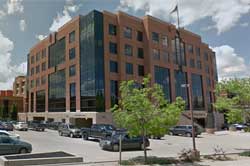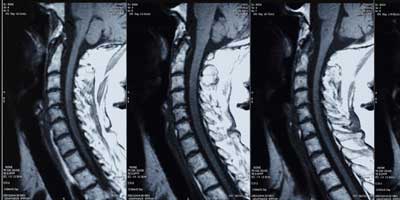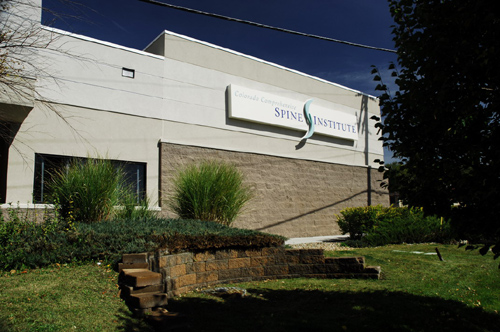Locations

Fax: (303) 762-9292

Spinal Fusion with Instrumentation

Spinal fusion permanently fuses or joins two or more vertebrae. Bone graft is used in spinal fusion procedures to help the spine fuse. There are different types of bone graft such as autograft (patient’s own bone), allograft (donor bone), and bone morphogenetic protein (BMP). Bone graft is packed between spinal instrumentation and spaces where it will grow and heal.
Instrumentation includes implants such as rods, plates, screws, interbody devices, cages, and hooks. Implanted instrumentation immediately stabilizes the spine after surgery, adding strength, and helps to maintain proper alignment while fusion occurs. Depending on the type of fusion and instrumentation performed, the patient may need to wear a brace after surgery for added support during healing.
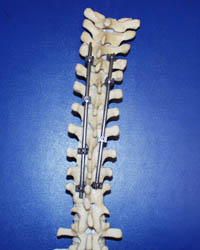
Rod instrumentation to facilitate fusion
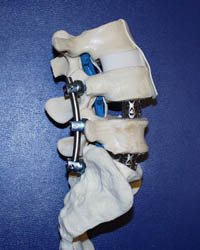
Bone model showing cage, rod, and screw
When Necessary
Spinal fusion and instrumentation may be performed to correct spinal deformity, treat fracture or spondylolisthesis, or stabilize the spine after discectomy. Of course, there are other spinal disorders and situations when fusion and instrumentation are needed.
Common surgical procedures that involve spinal fusion and instrumentation include:
- Anterior Discectomy and Fusion (ACDF)
- Anterior Lumbar Interbody Fusion (ALIF)
- Posterior Lumbar Interbody Fusion (PLIF)
- Transforaminal Lumbar Interbody Fusion (TLIF)
Fusion Success
Sometimes fusion is not always successful. One of the biggest reasons for failed fusion is smoking or tobacco use. That is why our medical team asks smokers to stop well in advance of their surgery day and to make smoking cessation a permanent choice for improved health.
Conclusion
Our surgeons who perform spinal fusion and instrumentation procedures are highly skilled in the most advanced technology. We welcome all of your questions and concerns about treatment.



